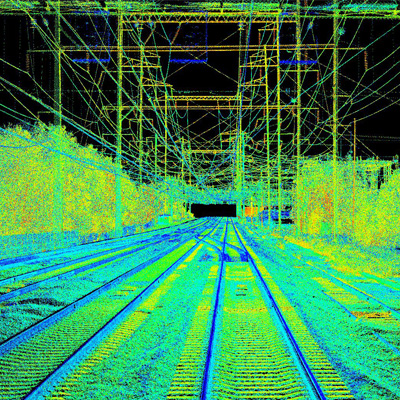BATHYMETRIC LIDAR
Bathymetric Lidar is a specialised remote sensing technology used to measure the depth of water bodies, such as oceans, rivers, estuaries, lakes, and reservoirs. Unlike traditional Lidar, which is mainly used for terrestrial and aerial mapping, bathymetric Lidar is designed to operate over water, making it particularly valuable for hydrographic and coastal surveying. Here’s how bathymetric Lidar works:
Laser Emission: The bathymetric Lidar system emits green laser pulses towards the water’s surface.
Reflection and Return: These laser pulses penetrate the water and interact with the submerged objects and the seafloor. Pulses are then reflected back to the Lidar sensor.
Data Collection: The system records the precise time it took for the laser pulses to return to the sensor, just like in traditional Lidar. However, in this case, the time of return is a function of the depth of the water and the characteristics of the seafloor and underwater features.
Data Processing: Bathymetric LiDAR data is processed to generate a detailed bathymetric map, which represents the underwater topography, including the depth of the water and the features on the seafloor. The water surface is modelled and each point is corrected in space for refraction as it passes through the water surface. These data can be used for coastal and fluvial management, port depth clearances, sedimentation monitoring, and various other marine and hydrographic applications.
Bathymetric LiDAR is particularly useful in areas with shallow, or complex underwater environments where traditional boat-mounted surveying methods, such as sonar, may have limitations. It provides high-resolution depth information and can be used for a variety of purposes, including nautical safety, environmental monitoring, and underwater resource management.
Applications for Bathymetric Lidar
- Hydrographic Surveying
- Coastal Zone Management
- Underwater Habitat Mapping
- Infrastructure Planning
- Environmental Impact Assessment
- Search and Rescue Operations
- Geological and Geophysical Research
- Climate Change Research
- River and Inland Waterway Surveying
Why use Bathymetric LiDAR?

Underwater Clarity

Rapid Data Acquisition

Unmatched Accuracy

Versatile Applications

Safety & Cost Effectiveness

Environmental Conservation
Find out more
Find out more about our range of Aerial Lidar services that could benefit your next project.

